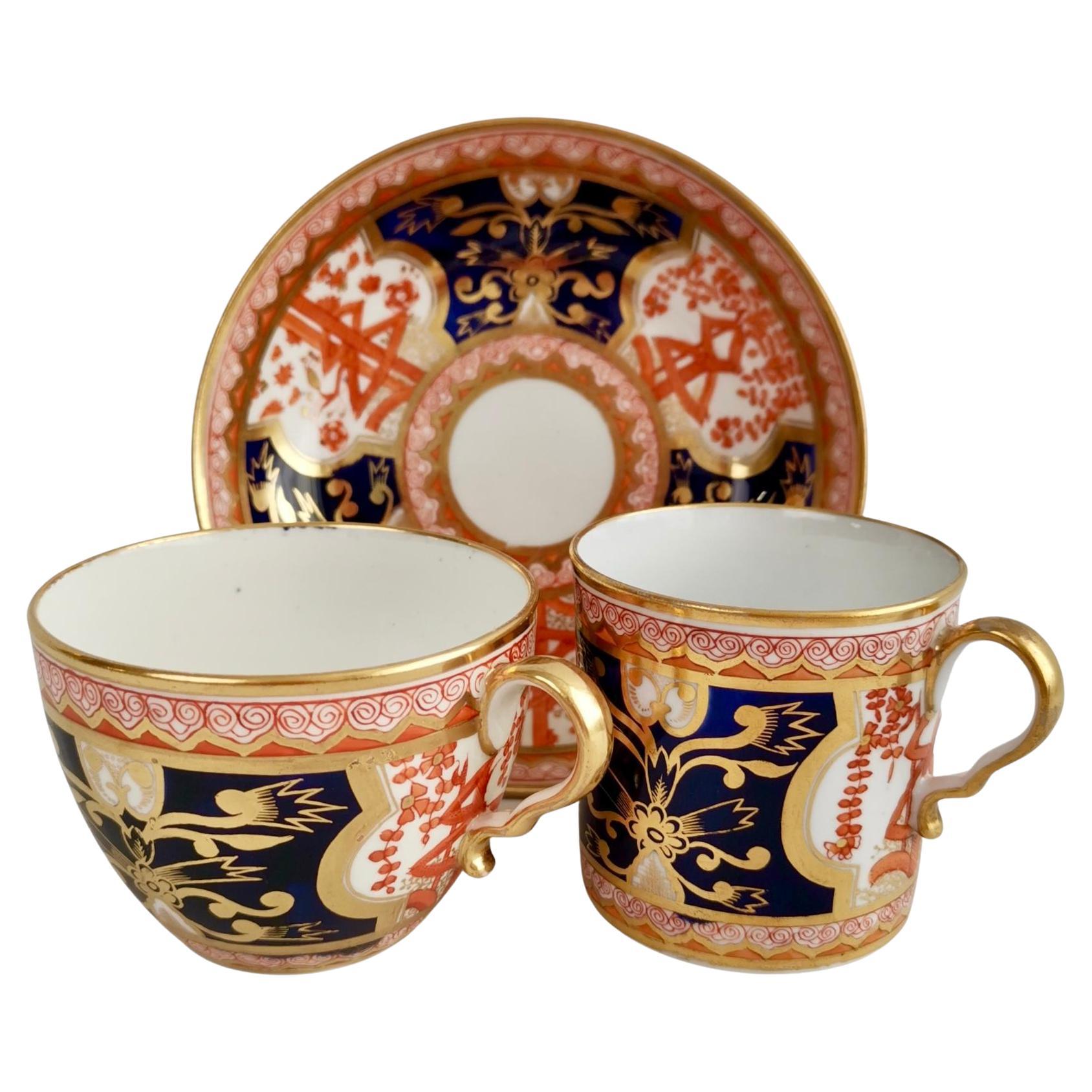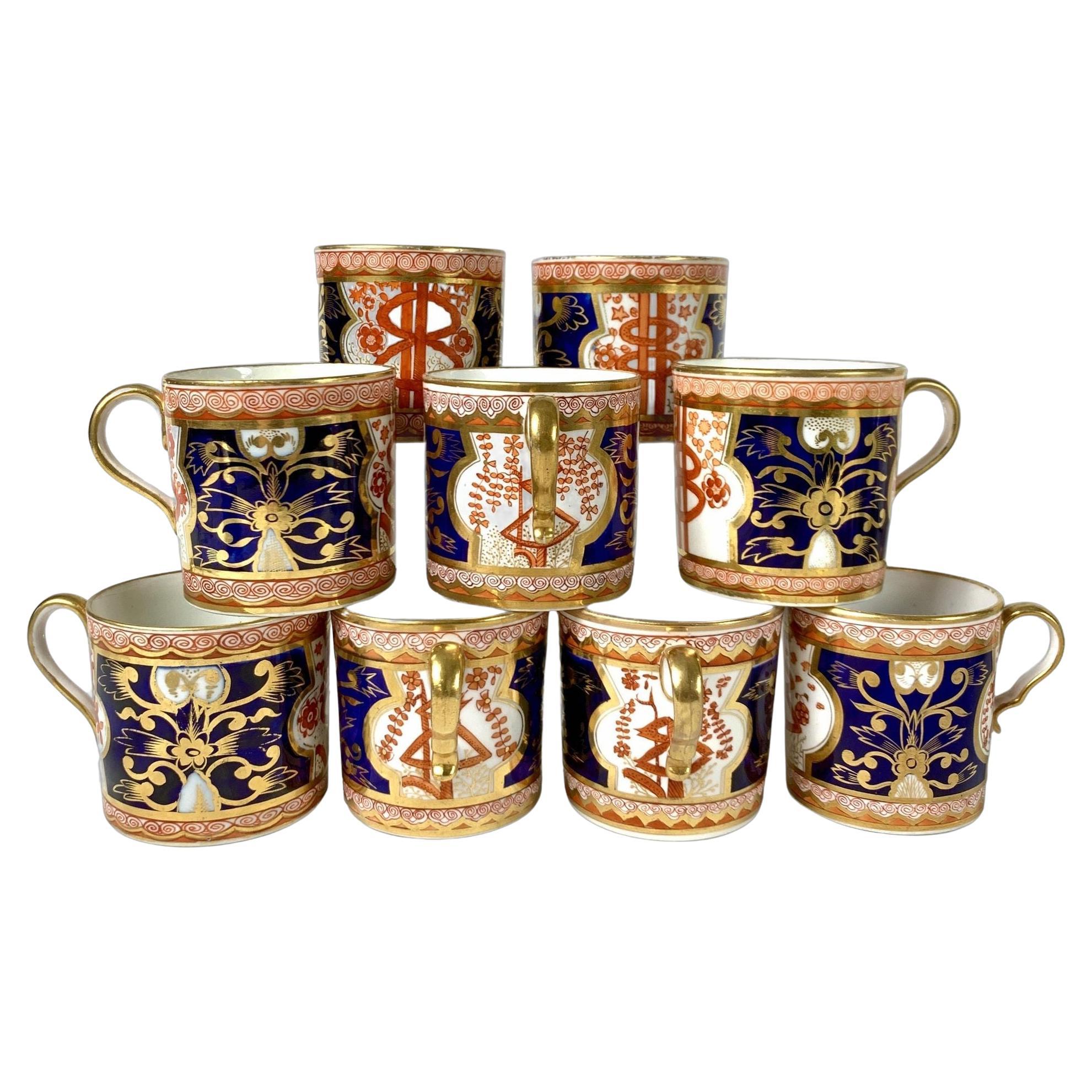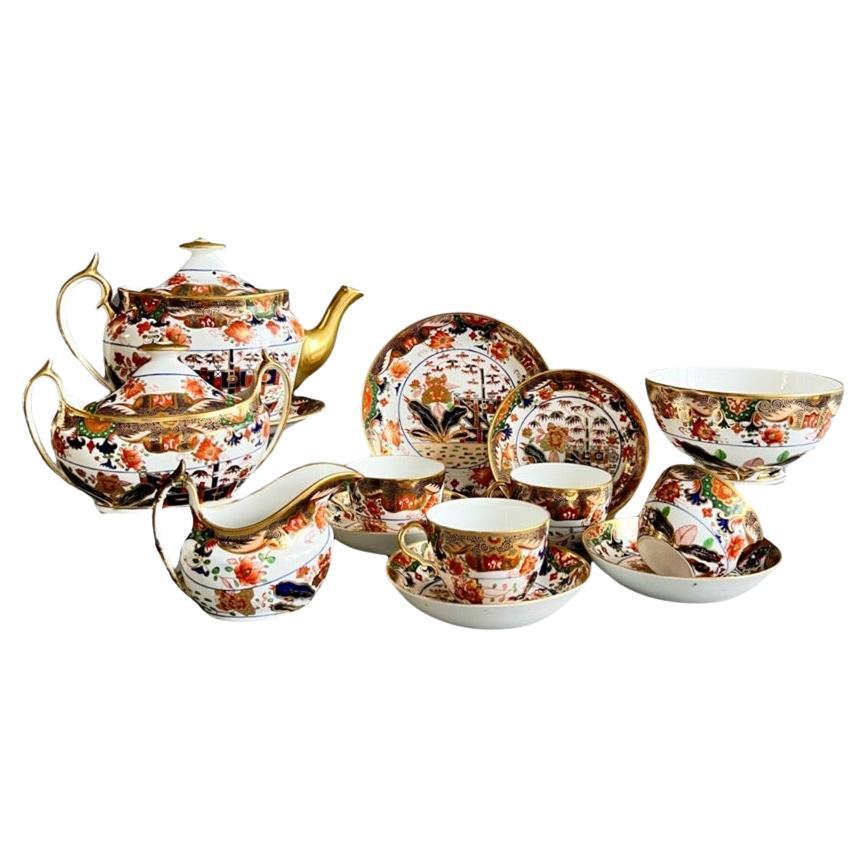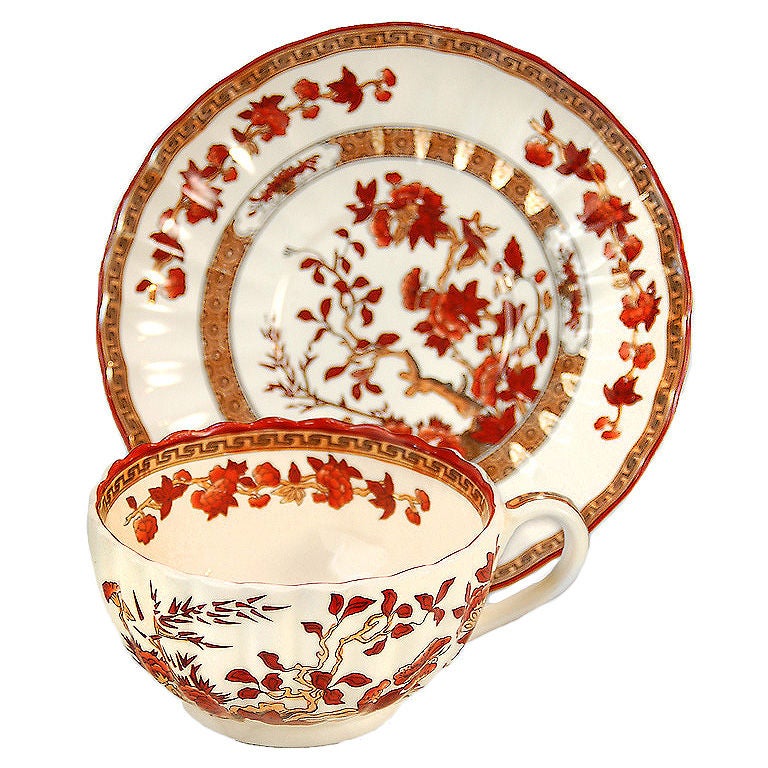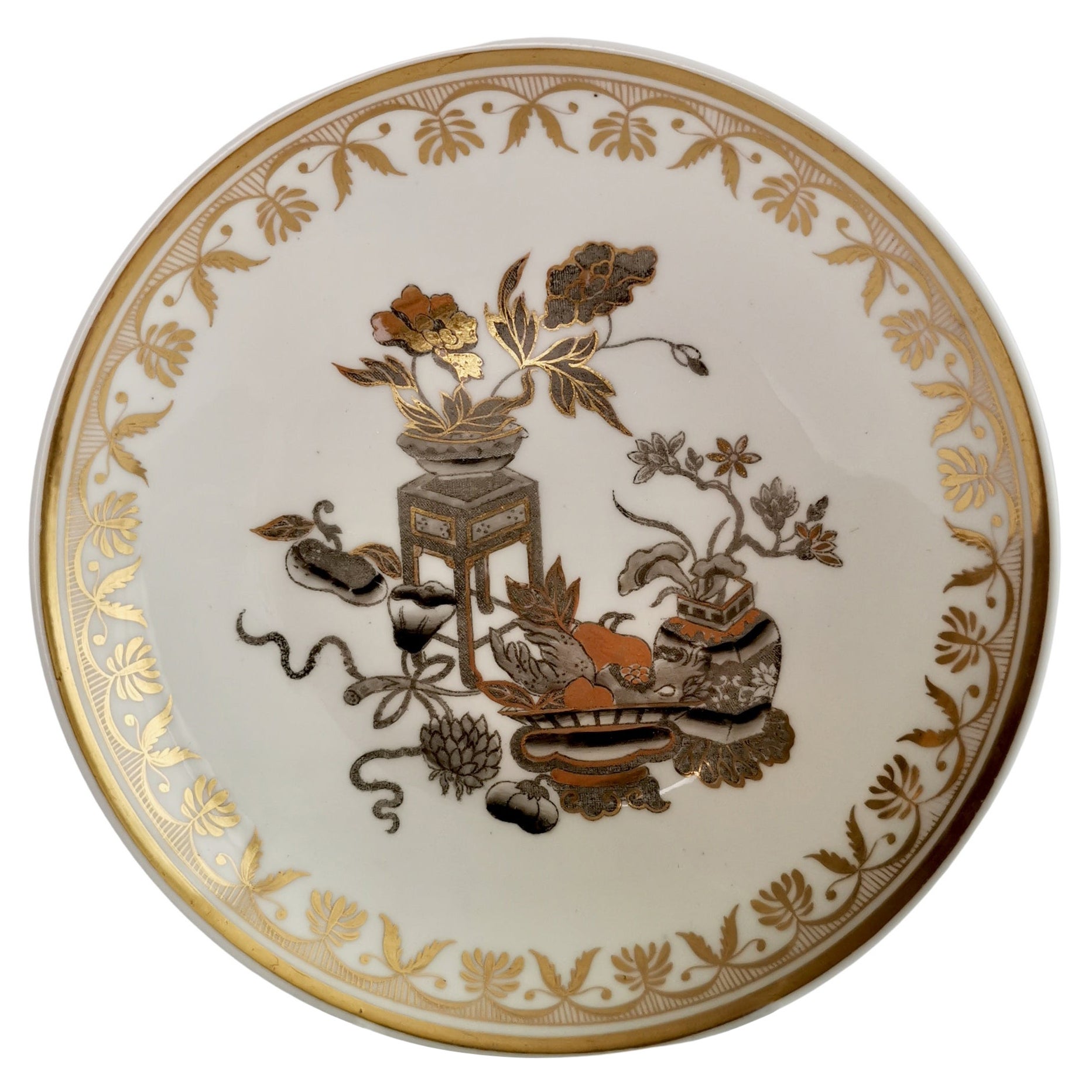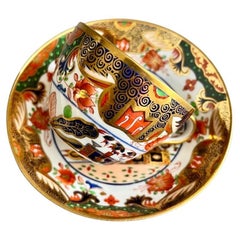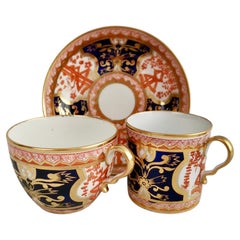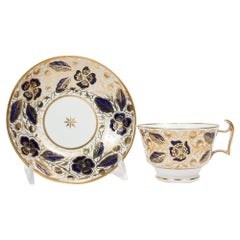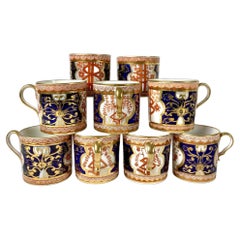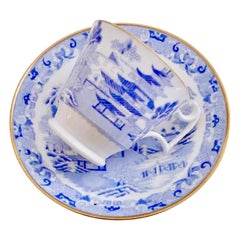
Spode Coffee Cup, Broseley Pattern Pagoda, 1818-1825
View Similar Items
Spode Coffee Cup, Broseley Pattern Pagoda, 1818-1825
About the Item
- Creator:Spode (Maker)
- Dimensions:Height: 1 in (2.54 cm)Width: 1 in (2.54 cm)Depth: 1 in (2.54 cm)
- Sold As:Set of 2
- Style:Regency (Of the Period)
- Materials and Techniques:
- Place of Origin:
- Period:
- Date of Manufacture:1818-1825
- Condition:Wear consistent with age and use. Excellent condition without damage, repairs, crazing or wear; some glaze imperfections.
- Seller Location:London, GB
- Reference Number:Seller: A-SPO491stDibs: LU4805117444052
Spode
Spode is one of the oldest and most distinguished of the great pottery companies of Staffordshire, the time-honored home of English ceramics. The firm’s blue and white bone china transferware is a timeless classic. Spode dishes compose the sort of elegant dinner service that most of us envision on a traditional holiday table.
The company was established in 1770 in Stoke-on-Trent by Josiah Spode, a friend and neighbor of another estimable English ceramist, Josiah Wedgwood. Spode was particularly known for two technical achievements in the firm’s early decades. The first was to develop a standard formula for the making of bone china — a type of porcelain (made with a mixture of bone ash, minerals and clay) that is dazzlingly white and so strong it can be used to create very thin translucent plates and vessels. The other was to perfect the making of transferware. That process involves the transfer of pictorial images inked on tissue paper — such as the garden scenery in the famous Willow dish patterns — onto ceramics that are then sealed with a glaze. In 1833, following the sudden death of Josiah Spode III, business partner W.T. Copeland took over the company and changed its name. Collectors regard Copeland-marked pieces as Spode china. The Spode brand was revived in 1970.
From the 1820s onward, Spode enjoyed tremendous success both in Britain and elsewhere owing to the beauty and vitality of its decorative imagery. By some counts, Spode created more than 40,000 patterns in the 19th century. Many favorite Spode patterns — among them Blue Italian, India Tree, Greek and Woodland — date to the company’s early years. Spode’s most popular pattern, Christmas Tree, was introduced in 1938. Prices for Spode china vary widely, based on the size of the service, its condition and the pattern. An antique dinner service for 12 people or more, in good repair and complete with cups and serving dishes, will generally cost between $10,000 and $20,000. Such Spode services become heirlooms — a proud and timeless addition to a family’s table. And as you will see on these pages, Spode’s rich and varied wares offer a visual feast in and of themselves.
- Spode Porcelain Teacup, Imari Tobacco Leaf Pattern 967, Regency ca 1810By SpodeLocated in London, GBThis is a beautiful teacup and saucer made by Spode in about 1810. The set is decorated with the famous Imari Tobacco Leaf pattern 967, which was first introduced by Spode in 1806. ...Category
Antique 1810s English Regency Porcelain
MaterialsPorcelain
- Spode Porcelain Teacup Trio, Red Imari Dollar Pattern, Regency, ca 1810By SpodeLocated in London, GBThis is a beautiful orphaned teacup made by Spode in about 1810. It bears a beautiful Japanese-inspired Imari pattern. Spode was the great pioneer among the Georgian potters in England. Around the year 1800 he perfected the bone china recipe that has been used by British potters ever since, and he was also the leading potter behind the technique of transferware, making it possible for English potters to replace the Chinese export china, which had come to an end around that time, with their own designs. This was fundamental to a thriving industry that would last for about 150 years and provide half the world with their tableware. Spode porcelain is regarded as one of the highest quality porcelains around; for a soft-paste porcelain it is surprisingly hard and fine, and has a wonderful bright white colour. The pattern on this can is called "Dollar" pattern, a very famous pattern that was used by English potters in the 18th and early 19th Century. It is obvious why it is called “dollar” - but its origin is less obvious! It is thought that this pattern was derived from a very old Chinese pattern depicting a tree with elaborate foliage that hides a Chinese character representing longevity or happiness. Traditionally, this went with a an image called “Taotie”, which was used on very ancient bronze vases...Category
Antique Early 1800s English Regency Porcelain
MaterialsPorcelain
$420 Sale Price / set20% OffFree Shipping - Spode Porcelain Tea Service, Imari Tobacco Leaf Pattern 967, Georgian ca 1810By SpodeLocated in London, GBThis is a stunning tea service made by Spode in about 1810, consisting of a large teapot with cover, a milk jug, a sucrier with cover, a slop bowl, a saucer dish and 4 teacups with s...Category
Antique 1810s English Regency Porcelain
MaterialsPorcelain
$3,400 / setFree Shipping - Riley Coffee Cup, Gilt Chevron Zigzag Pattern, Regency, circa 1815By J&R RileyLocated in London, GBThis is a beautiful coffee cup and saucer made by Riley in about 1815, decorated in a striking gilt chevron pattern with a rather psychedelic zigzag effect. The John & Richard Ril...Category
Antique 1810s English Regency Porcelain
MaterialsPorcelain
$256 Sale Price / set20% OffFree Shipping - Spode Orphaned Porcelain Saucer, Chinoiserie Gilt Potted Flowers, Regency ca1820By SpodeLocated in London, GBThis is a beautiful deep orphaned saucer made by Spode around 1820. The saucer is decorated with a gorgeous Chinoiserie pattern of a group of potted flowers in gilt and grey. The sau...Category
Antique 1820s English Regency Porcelain
MaterialsPorcelain
$200 Sale Price20% OffFree Shipping - Spode Porcelain Teacup Trio, Lavender Blue with Flower Sprays, Regency ca 1815By SpodeLocated in London, GBThis is a beautiful "true trio" consisting of a teacup, a coffee cup and a saucer, made by Spode in about 1815. It is decorated with pattern 2234 with a striking lavender or periwinkle blue border and finely painted flower sprays. In the late 18th and early 19th Century a "true trio" is how cups and saucers were sold; as you would never drink tea and coffee at the same time, why invest in an extra saucer? Josiah Spode was the great pioneer among the Georgian potters in England. Around the year 1800 he perfected the bone china recipe that has been used by everyone ever since, and he was also the leading potter behind the technique of transferware, making it possible for English potters to replace the import of Chinese china that had come to an end around that time, with their own. This was fundamental to a thriving industry that would last for about 150 years and provide half the world with their tableware. This set is made in the famous "London" shape, which was brought out by Spode in 1812 and was quickly copied by all other makers. It then remained the most popular shape for about 10 years. The set is potted in fine white porcelain - by the year 1810 Spode had perfected his recipe for bone china and it became beautifully smooth, white, thin and translucent. All three items are marked with the red hand painted SPODE mark and the pattern number 2234. CONDITION REPORT The set is in excellent antique condition without any damage, repairs or crazing. There is some minimal wear as visible in the pictures...Category
Antique 1810s English Regency Porcelain
MaterialsPorcelain
$400 Sale Price / set20% OffFree Shipping
- Antique Early 19th Century Spode Porcelain Pattern Number 2408 Tea Cup & SaucerBy SpodeLocated in Philadelphia, PAA fine antique Spode porcelain cup & saucer. Pattern no. 2408 Decorated throughout with a cobalt floral patttern and extensive gilding. Simply a great cup & saucer from Spod...Category
Antique Early 19th Century English Neoclassical Porcelain
MaterialsPorcelain
- Nine Spode Dollar Pattern Coffee Cups England Circa 1820By SpodeLocated in Katonah, NYPerfect for a double espresso! These nine "Dollar" pattern porcelain coffee cups are decorated in the exquisite "Dollar" pattern. Spode made this set in England circa 1820. The decor...Category
Antique Early 19th Century English Regency Tea Sets
MaterialsPorcelain
- Spode Indian Tree Cup and SaucerLocated in Asheville, NCThis is an absolutely fabulous antique Copeland Spode Indian tree cup and saucer. It is a spectacular example of Spode porcelain with rust and orange...Category
Antique 18th Century and Earlier English Porcelain
MaterialsPorcelain
- Collection of Mario Buatta a Pair of Porcelain Cups Made in England, circa 1825By StaffordshireLocated in Katonah, NYProvenance: The Private Collection of Mario Buatta a pair of porcelain teacups made in England, circa 1825. This lovely pair of Staffordshire teacups is painted with a delicate flor...Category
Antique Early 19th Century English Country Tea Sets
MaterialsPorcelain
- Early 19th Century Spode Porcelain Coffee Can All Hand Gilt Pattern, circa 1810By SpodeLocated in Lincoln, LincolnshireThis is a good example of an English George III period, porcelain, coffee can (cup), made by Spode in the early 19th century, circa 1810. The can is nominally straight sided and h...Category
Antique Early 19th Century English Regency Ceramics
MaterialsPorcelain
- Corrispondenze, Six Contemporary Decorated Coffee Cups with PlatesBy Vito NestaLocated in Milano, LombardiaVito Nesta Grand Tour's "Corrispondenze" collection is a portrait of what we carry with us after every journey we make in the world. Images, colo...Category
2010s Italian Porcelain
MaterialsPorcelain


